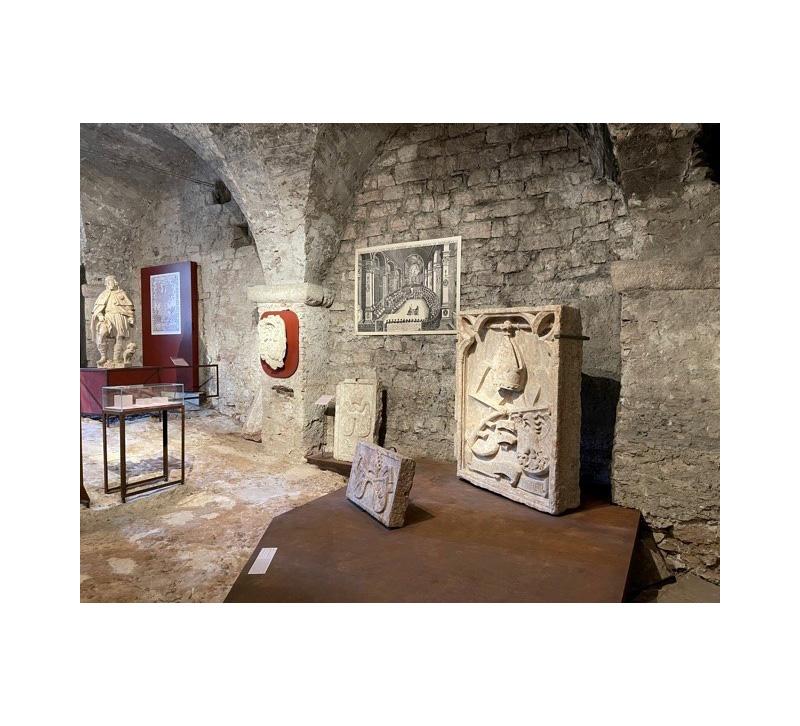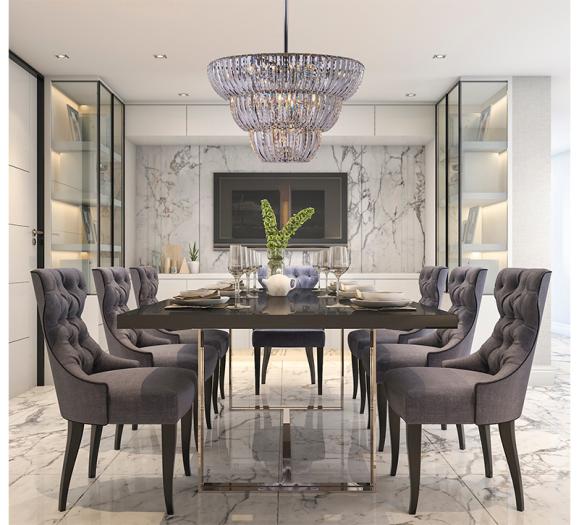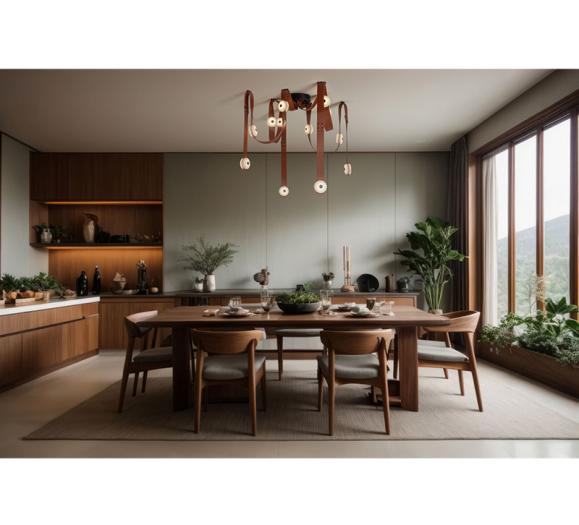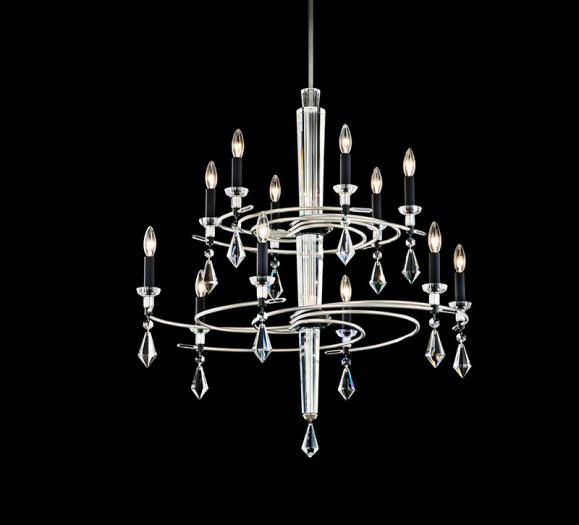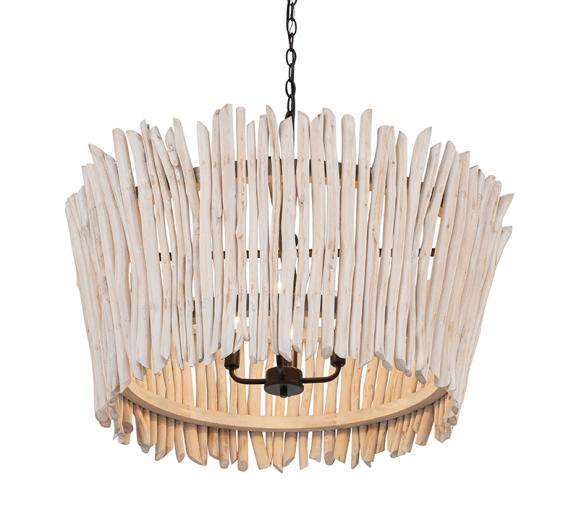This is the Castle del Buonconsiglio in Trento, Italy. It is massive. I noticed that even the smallest towns throughout Italy have castles. Something incredibly huge and fortified, pushing up against the tiny buildings of the citizenry. What the Italians have smartly done is reimagine these buildings, including many of their enormous churches for new uses. This castle is now a museum. It was built in the 13th century. The United States was founded in the 18th century, which means that this castle was built 500 years before we were a country. The challenge is how do you get effective display lighting into such an old structure, especially one that is made of solid stone?
When I walked into the first room, the initial thing I noticed was the amount of ambient illumination. In most American museums there is very little general illumination. It’s all about accent light. Each piece of art is highlighted while the rest of the space falls into darkness, including the wall space in between the art. This can cause a lot of eye fatigue.
Here, in this museum the light on the art is only a little brighter than the wall space around it. I found it invigorating instead of exhausting. It was wonderful to see these ancient walls and ceilings become part of the overall experience.

I looked up and saw that they had installed a cable system. The matte black rectangular fixtures contained both recessed adjustable heads and indirect lighting. I found this to be very inventive. You barely saw them in the space. The power was run using surface-mounted low-voltage wiring, tucked discreetly into corners. LEDs were the light source of choice. The slightly cooler 3000 K color temperature enhanced the gray and white tones without visually bleaching out the warmer natural colors. The 90CRI also provided the richer hues of halogen lighting, without the heat of an incandescent source.
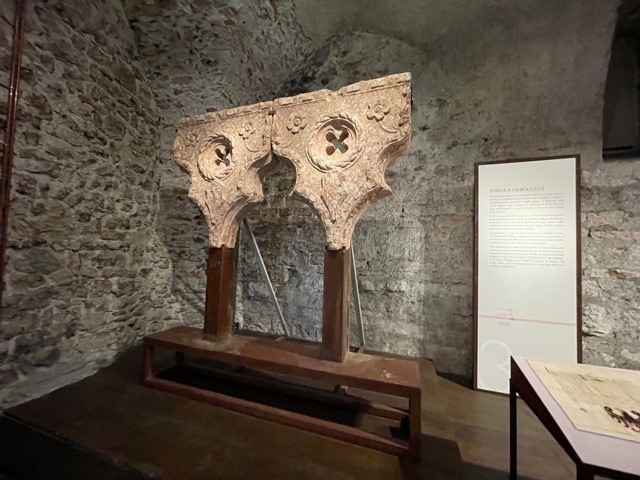
Here, 2700 K LED sources are used to enhance the sandstone color of this architectural element. You can see how the walls, lit with 3000 K LED’s, recede visually. This adds greatly to the dimensionality of the display.
In addition to the cable system, other inventive methods of accent lighting were utilized. Take a look at this section of stone, incised with Latin lettering (shown below). In this instance, it is 50 percent brighter than the surrounding walls. This was not lit from above, but instead from the side, using portable luminaires.
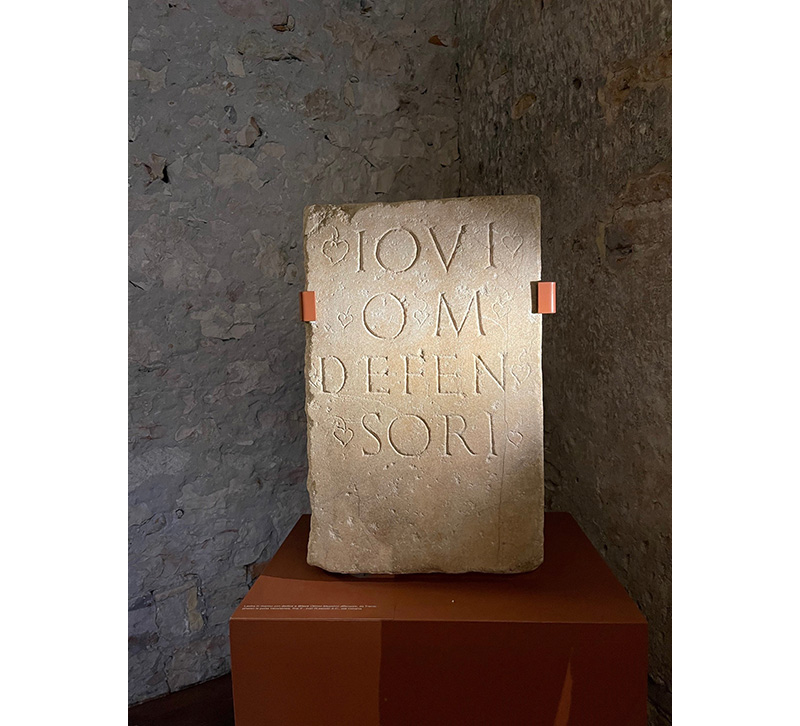
Photo by Randall Whitehead.
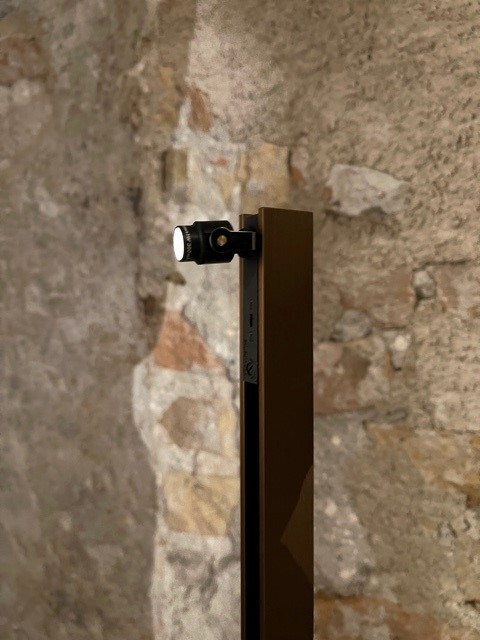
Sometimes the cable system could not reach every corner of the rooms. A series of floor lights with adjustable LED track heads were used (shown above). Track was installed within the I-beam shaped column. This allowed additional track heads to be installed, depending on how much light was needed. A heavily weighted base stabilized the luminaire. Yes, I picked it up.

Other display cases had lighting within. They used a linear LED lighting, housed in a triangular aluminum extrusion with a frosted lens. This provided even illumination. The light source was virtually invisible from the normal viewing angle. I had to get down below with my camera (shown above) in order to capture the light source. Here, I think maybe 2700 K might have worked better than 3000 K, because of the terra cotta pottery.
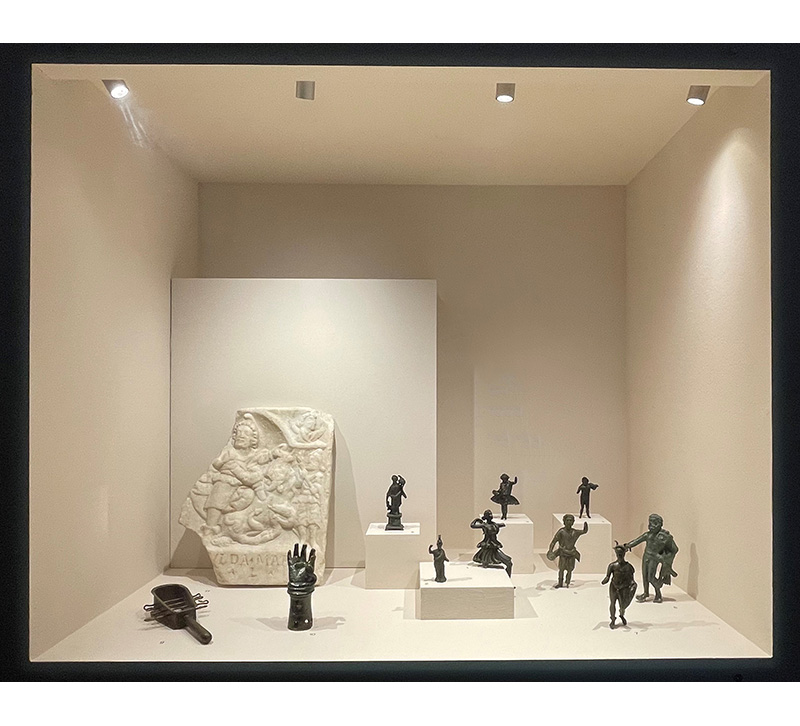
Other display cases were more like dioramas. They used miniature LED directional fixtures to highlight the objects in a slightly more theatrical way. I liked how the white background works with the bronze figures. In my mind, these are the tiny townspeople that serviced the castle. The one raised hand represents asking permission to use the bathroom.



